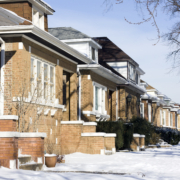Five Things Every Homeowner Should Know About Zoning in Chicago
What is zoning and what does it have to do with homeownership? “Zoning is a form of government regulation which determines how private property can be used by owners.”
In a simplified example, zoning means your neighbor cannot turn their condo unit into a public café or a daycare. Zoning might not feel important to you as a homeowner, but the extent of its influence may surprise you!
Here are five quick, must-know facts about zoning.
#1: Common Zoning Categories
Three common categories of zoning districts (also called use districts) are residential, commercial/business and industrial.
Just because you may be in a residential zone, does not mean every type of residential property is included in that district. In the case of residential zones, condominiums or other multi-family units may be specific to their own district and prohibited in others.
Homeowner Pro Tip: Accessory Dwelling Units (ADUs)
#2: Watch Out For Use Restrictions
“Use restrictions” mean that even if a property falls in a specific zone, the actual code can include restrictions that specifically prevent that use. For example, historic designations are a common type of a use restriction.

Are You In A Historic Landmark/District Designation?
If your home falls in a Landmark District, carefully review the guidelines you may need to follow if you are remodeling. From formal municipal reviews to official certificates, there may be processes and extra approvals you must obtain before any work can be done.
A few famous Landmark Districts in Chicago are Old Town Triangle, Black Metropolis-Bronzeville, Printing House Row, Logan Square Boulevards, Old Chicago Water Tower and Pullman.
#3: Other Common Residential Zoning Restrictions
A residential zone includes restrictions that may affect your plans or dreams for your future property. Do not sign any paperwork until you’ve completed all your zoning research!
As stated above, the city of Chicago recently reversed its stance on ADUs which places strict guidelines on whether a homeowner could have “accessory units” or additional living units such as granny flats, a build-out space in the basement of a multi-unit or living space above a garage.
Other key terms to keep an eye out for as far as zoning restrictions go are lot coverage, easements, parking minimums, floor area ratios and lot setbacks.

#4: Where To Look Up Your Zone
You can look up an area’s district at the local municipality or county. Ask for the zoning department! You can also look up the history of Chicago’s historic landmarks on their website.
Curious about how legislation is related to Chicago zoning? Learn more here.
#5: You Can Apply For A “Zoning Variance”
A zoning variance is granted by local governments that can permit you, the property owner, to use your property for something that varies from the official zone.
Follow Chicago’s stated application processes if you would like to apply for a zoning variance. Be advised— speedy turnaround times are not guaranteed! When in doubt, consult with your REALTOR® about how to handle a complex zone.












